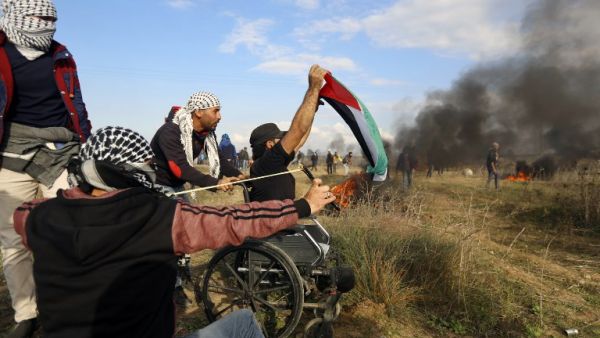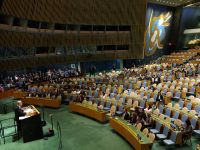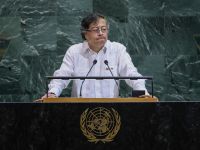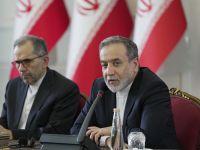Could the killing of double-amputee, Ibrahim Abu Thuraya, be the spark that ignites a third intifada in Palestine?
That is what Palestinian journalist Nasser Atta has suggested.
Talking to many #Palestinians tonight they say killing of Ibrahim , who is double amputees as a result of #Gaza war, will be the beginning g of the start of a third intifada, they compare him to Mohammed al Dura killed in the second Intifada. #Trump pic.twitter.com/iR3uyNhNuw
— Nasser Atta (@nasseratta5) December 15, 2017
Abu Thuraya, who lost both his legs in Israeli bombardment of Gaza in 2008, was killed by an Israeli bullet in the head. He was one of four Palestinians to die on Friday, as protests continued against U.S. President Donald Trump’s decision to declare Jerusalem Israel’s capital.
Atta wrote that his death is being compared by Palestinians to the death of fellow Gazan Muhammed al Dura in the Second Intifada.
Video footage of 12-year-old Muhammed and his father cowering, caught in the crossfire during the early days of the 2000 uprising, had a powerful effect on public opinion. The young boy was hailed as a martyr across the Muslim world.
With Muhammad al Dura the excess of Israeli brutality was felt to be put on display through the killing of an unarmed child, apparently at the hands of the military. For many, the death of Ibrahim Abu Thuraya has shown the same through the slaughter of an unarmed disabled man.
“What a weak occupation that assassinates the disabled Ibrahim Abu Thuraya,” tweeted @emaaaddddd.
“Even a psychiatrist can't help you if you think it's OK to kill an unarmed disabled man who was defending his land by stones,” @KevorkAlmassian added.
Images of Abu Thuraya were being tweeted on Saturday under the hashtag “icon of the intifada,” adding credence to Atta’s suggestion that his death could be a turning point.
“A disabled person will move the people and ignite the battlefront,” said @mohammed_wahidy.
The death of #Ibrahim_Abu_Thuraya, a disabled #Palestinian activist, in #Gaza on Friday is becoming the latest symbol in Palestinian anger at Israel.
Of course, #Israel is investigating his killing. We’ve seen this movie before! https://t.co/pxCtWrDL8j— Khalil Jahshan (@naz548) December 16, 2017
On social media his death has already proved to be symbolic, sparking numerous artistic responses, most prominently from renowned cartoonist Carlos Latuff.
Today @IDFSpokesperson "most moral army in the world" killed with a head shot #IbrahimAbuThuraya a Palestinian amputee man from #Gaza pic.twitter.com/OsUZrXGwuO
— Carlos Latuff (@LatuffCartoons) December 15, 2017
Others have painted him as an angel and as having the land of Palestine in the place of his legs.
#Jerusalem got him to walk again "like a giant", #Palestinian cartoons on the wheelchair-bound Ibrahim Abu Thuraya, shot dead yesterday by #Israel troops along w 3 other #Palestinian protesters as riots sparked by #Trump's Jerusalem declaration continuehttps://t.co/9ZG9D8oBrR pic.twitter.com/Ie99iUIPhA
— SaadAbedine (@SaadAbedine) December 16, 2017
Prior to the demonstration Friday, Abu Thuraya had told reporters “this land is our land. We are not going to give up. America has to withdraw the declaration it has made.”
Israeli forces opened fire on protesters at the Gaza-Israel border, killing the 29-year-old activist. Thousands marched in his funeral on Friday, according to Maan News.
The shooting of Abu Thuraya is just one moment of apparent cruelty from the Israeli military during the protests that have followed Trump’s Dec. 6 decision.
A video of children being arrested by Israeli soldiers in the West Bank city of Hebron and seemingly placed in a “cage” has caused outrage online.
Meanwhile, the image of a blindfolded 16-year-old being arrested by nearly two dozen soldiers has already become symbolic of heavy-handed Israeli military tactics.
This killing, however, may well have a greater impact still, feeding Palestinian anger and potentially intensifying protests.
“With the death of Abu Thuraya, the Trump administration now has the bonfire it wanted,” Chris Meserole, Middle East expert at the Brookings Institution, told Newsweek.
“The question going forward is this: Do they further fan the flames, or instead grab the fire extinguisher?”







